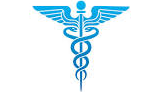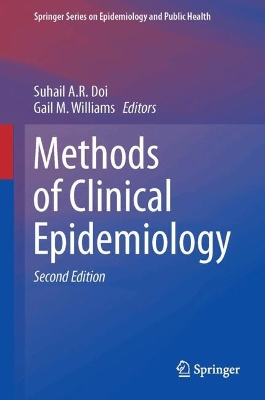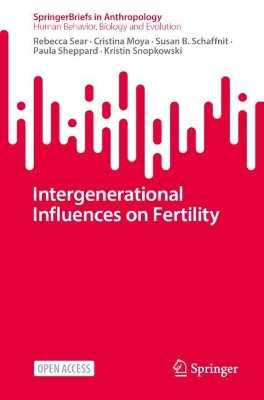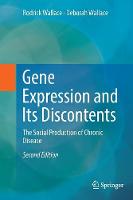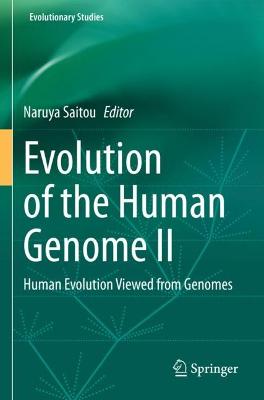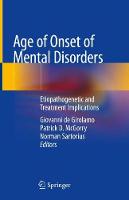Rare Diseases Epidemiology: Update and Overview
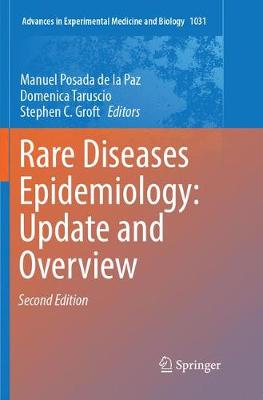 -15%
portes grátis
-15%
portes grátis
Rare Diseases Epidemiology: Update and Overview
Groft, Stephen C.; Taruscio, Domenica; Posada de la Paz, Manuel
Springer International Publishing AG
09/2018
667
Mole
Inglês
9783319883854
15 a 20 dias
1062
Descrição não disponível.
Part I Introduction.- Rare Diseases: Joining Mainstream Research and Treatment Based on Reliable Epidemiological Data.- Part II Rare diseases diagnosis.- Undiagnosed diseases: Italy-US collaboration and international efforts to tackle rare and common diseases lacking a diagnosis.- Intellectual disability & rare disorders: A diagnostic challenge.- Improved diagnosis and care for rare diseases through implementation of a precision public health framework.- Part III Registries, Natural History of Rare Diseases and Biobanks.- Natural history, trial readiness and gene discovery: advances in patient registries for neuromuscular disease.- Facilitating Clinical Studies in Rare Diseases.- Rare Diseases Biospecimens and patient registries: Interoperability for research promotion, a European example: EuroBioBank and Spain RDR-BioNER.- Data Quality in Rare Diseases Registries.- Preparing data at the source to foster interoperability across r
are disease resources.- Part IV Orphan drugs and therapies.- Incentivizing orphan product development: United States Food and Drug Administration orphan incentive programs.- Post-approval Studies for Rare Disease Treatments and Orphan Drugs.- Evidence-Based Medicine and Rare Diseases.- Health technology assessment and appraisal of therapies for rare diseases.- New Therapeutic Uses for Existing Drugs.- Patient empowerment and involvement in research.- Part V Cost-Effectiveness and Cost-of-illness.- Cost-effectiveness methods and newborn screening assessment.- Cost-of-illness in rare diseases.- Part VI Rare Diseases Prevention.- Primary prevention of congenital anomalies: special focus on environmental chemicals and other toxicants, maternal health and health services and infectious diseases.- Newborn Screening: Beyond the Spot.- Part VII New Research Perspectives in RD.- A Global Approach to Rare Diseases Research and Orphan Products Development: The International Rare Diseases Research Consortium (IRDiRC).- Prospects of Pluripotent and Adult Stem Cells for Rare Diseases.- Personalized Medicine: What's in for Rare Diseases?.- Microphysiological systems (tissue chips) and their utility for rare disease research.- Part VIII Rare Diseases Epidemiology.- Epidemiology of Rare Lung Diseases: The Challenges and Opportunities to Improve Research and Knowledge.- Rare neurodegenerative diseases: clinical and genetic aspects.- Immunological rare diseases.- Indigenous Genetics and Rare Diseases: Harmony, Diversity and Equity.- Mortality Statistics and their Contribution to Improving Rare Diseases Epidemiology: the Example of Hereditary Ataxia in Europe.- Congenital Anomalies: Cluster detection and investigation.- Part IX Rare Diseases policies and society.- The European Union Policy in the Field of Rare Diseases.- The role of solidarity(-ies) in rare diseases research.- Bridging the gap between health and social care for rare diseases: key issues and innovative solutions.- Health systems sustainability and rare diseases.- Preparing for the Future of Rare Diseases.- Index.
are disease resources.- Part IV Orphan drugs and therapies.- Incentivizing orphan product development: United States Food and Drug Administration orphan incentive programs.- Post-approval Studies for Rare Disease Treatments and Orphan Drugs.- Evidence-Based Medicine and Rare Diseases.- Health technology assessment and appraisal of therapies for rare diseases.- New Therapeutic Uses for Existing Drugs.- Patient empowerment and involvement in research.- Part V Cost-Effectiveness and Cost-of-illness.- Cost-effectiveness methods and newborn screening assessment.- Cost-of-illness in rare diseases.- Part VI Rare Diseases Prevention.- Primary prevention of congenital anomalies: special focus on environmental chemicals and other toxicants, maternal health and health services and infectious diseases.- Newborn Screening: Beyond the Spot.- Part VII New Research Perspectives in RD.- A Global Approach to Rare Diseases Research and Orphan Products Development: The International Rare Diseases Research Consortium (IRDiRC).- Prospects of Pluripotent and Adult Stem Cells for Rare Diseases.- Personalized Medicine: What's in for Rare Diseases?.- Microphysiological systems (tissue chips) and their utility for rare disease research.- Part VIII Rare Diseases Epidemiology.- Epidemiology of Rare Lung Diseases: The Challenges and Opportunities to Improve Research and Knowledge.- Rare neurodegenerative diseases: clinical and genetic aspects.- Immunological rare diseases.- Indigenous Genetics and Rare Diseases: Harmony, Diversity and Equity.- Mortality Statistics and their Contribution to Improving Rare Diseases Epidemiology: the Example of Hereditary Ataxia in Europe.- Congenital Anomalies: Cluster detection and investigation.- Part IX Rare Diseases policies and society.- The European Union Policy in the Field of Rare Diseases.- The role of solidarity(-ies) in rare diseases research.- Bridging the gap between health and social care for rare diseases: key issues and innovative solutions.- Health systems sustainability and rare diseases.- Preparing for the Future of Rare Diseases.- Index.
Este título pertence ao(s) assunto(s) indicados(s). Para ver outros títulos clique no assunto desejado.
epidemiology;genotype-phenotype correlation;next generation sequencing;orphan drugs;rare diseases
Part I Introduction.- Rare Diseases: Joining Mainstream Research and Treatment Based on Reliable Epidemiological Data.- Part II Rare diseases diagnosis.- Undiagnosed diseases: Italy-US collaboration and international efforts to tackle rare and common diseases lacking a diagnosis.- Intellectual disability & rare disorders: A diagnostic challenge.- Improved diagnosis and care for rare diseases through implementation of a precision public health framework.- Part III Registries, Natural History of Rare Diseases and Biobanks.- Natural history, trial readiness and gene discovery: advances in patient registries for neuromuscular disease.- Facilitating Clinical Studies in Rare Diseases.- Rare Diseases Biospecimens and patient registries: Interoperability for research promotion, a European example: EuroBioBank and Spain RDR-BioNER.- Data Quality in Rare Diseases Registries.- Preparing data at the source to foster interoperability across r
are disease resources.- Part IV Orphan drugs and therapies.- Incentivizing orphan product development: United States Food and Drug Administration orphan incentive programs.- Post-approval Studies for Rare Disease Treatments and Orphan Drugs.- Evidence-Based Medicine and Rare Diseases.- Health technology assessment and appraisal of therapies for rare diseases.- New Therapeutic Uses for Existing Drugs.- Patient empowerment and involvement in research.- Part V Cost-Effectiveness and Cost-of-illness.- Cost-effectiveness methods and newborn screening assessment.- Cost-of-illness in rare diseases.- Part VI Rare Diseases Prevention.- Primary prevention of congenital anomalies: special focus on environmental chemicals and other toxicants, maternal health and health services and infectious diseases.- Newborn Screening: Beyond the Spot.- Part VII New Research Perspectives in RD.- A Global Approach to Rare Diseases Research and Orphan Products Development: The International Rare Diseases Research Consortium (IRDiRC).- Prospects of Pluripotent and Adult Stem Cells for Rare Diseases.- Personalized Medicine: What's in for Rare Diseases?.- Microphysiological systems (tissue chips) and their utility for rare disease research.- Part VIII Rare Diseases Epidemiology.- Epidemiology of Rare Lung Diseases: The Challenges and Opportunities to Improve Research and Knowledge.- Rare neurodegenerative diseases: clinical and genetic aspects.- Immunological rare diseases.- Indigenous Genetics and Rare Diseases: Harmony, Diversity and Equity.- Mortality Statistics and their Contribution to Improving Rare Diseases Epidemiology: the Example of Hereditary Ataxia in Europe.- Congenital Anomalies: Cluster detection and investigation.- Part IX Rare Diseases policies and society.- The European Union Policy in the Field of Rare Diseases.- The role of solidarity(-ies) in rare diseases research.- Bridging the gap between health and social care for rare diseases: key issues and innovative solutions.- Health systems sustainability and rare diseases.- Preparing for the Future of Rare Diseases.- Index.
are disease resources.- Part IV Orphan drugs and therapies.- Incentivizing orphan product development: United States Food and Drug Administration orphan incentive programs.- Post-approval Studies for Rare Disease Treatments and Orphan Drugs.- Evidence-Based Medicine and Rare Diseases.- Health technology assessment and appraisal of therapies for rare diseases.- New Therapeutic Uses for Existing Drugs.- Patient empowerment and involvement in research.- Part V Cost-Effectiveness and Cost-of-illness.- Cost-effectiveness methods and newborn screening assessment.- Cost-of-illness in rare diseases.- Part VI Rare Diseases Prevention.- Primary prevention of congenital anomalies: special focus on environmental chemicals and other toxicants, maternal health and health services and infectious diseases.- Newborn Screening: Beyond the Spot.- Part VII New Research Perspectives in RD.- A Global Approach to Rare Diseases Research and Orphan Products Development: The International Rare Diseases Research Consortium (IRDiRC).- Prospects of Pluripotent and Adult Stem Cells for Rare Diseases.- Personalized Medicine: What's in for Rare Diseases?.- Microphysiological systems (tissue chips) and their utility for rare disease research.- Part VIII Rare Diseases Epidemiology.- Epidemiology of Rare Lung Diseases: The Challenges and Opportunities to Improve Research and Knowledge.- Rare neurodegenerative diseases: clinical and genetic aspects.- Immunological rare diseases.- Indigenous Genetics and Rare Diseases: Harmony, Diversity and Equity.- Mortality Statistics and their Contribution to Improving Rare Diseases Epidemiology: the Example of Hereditary Ataxia in Europe.- Congenital Anomalies: Cluster detection and investigation.- Part IX Rare Diseases policies and society.- The European Union Policy in the Field of Rare Diseases.- The role of solidarity(-ies) in rare diseases research.- Bridging the gap between health and social care for rare diseases: key issues and innovative solutions.- Health systems sustainability and rare diseases.- Preparing for the Future of Rare Diseases.- Index.
Este título pertence ao(s) assunto(s) indicados(s). Para ver outros títulos clique no assunto desejado.
